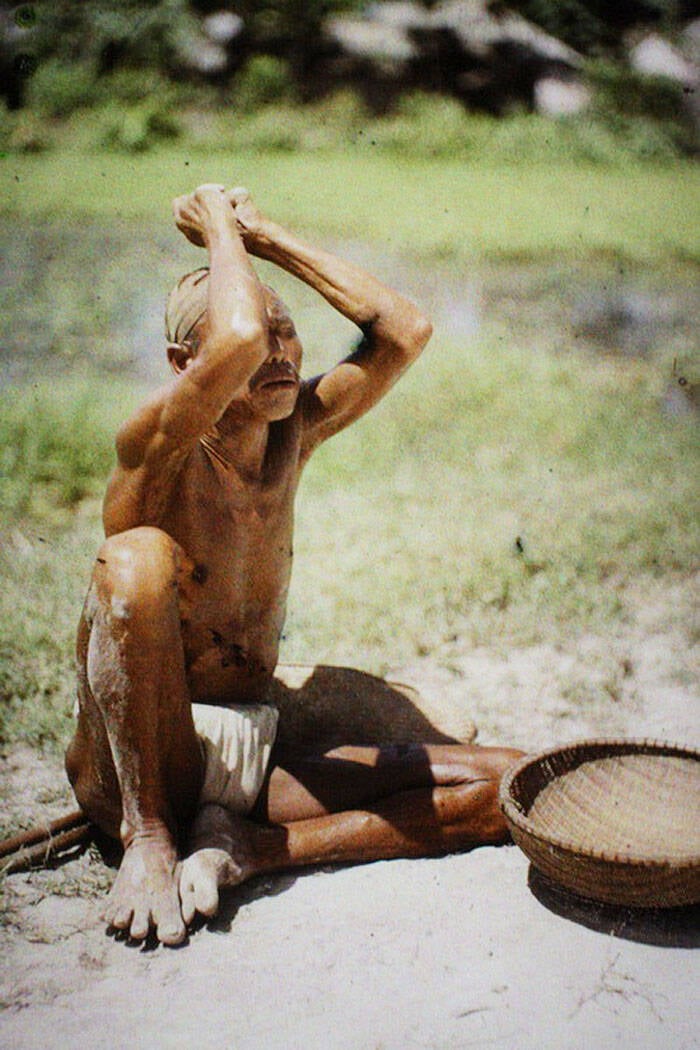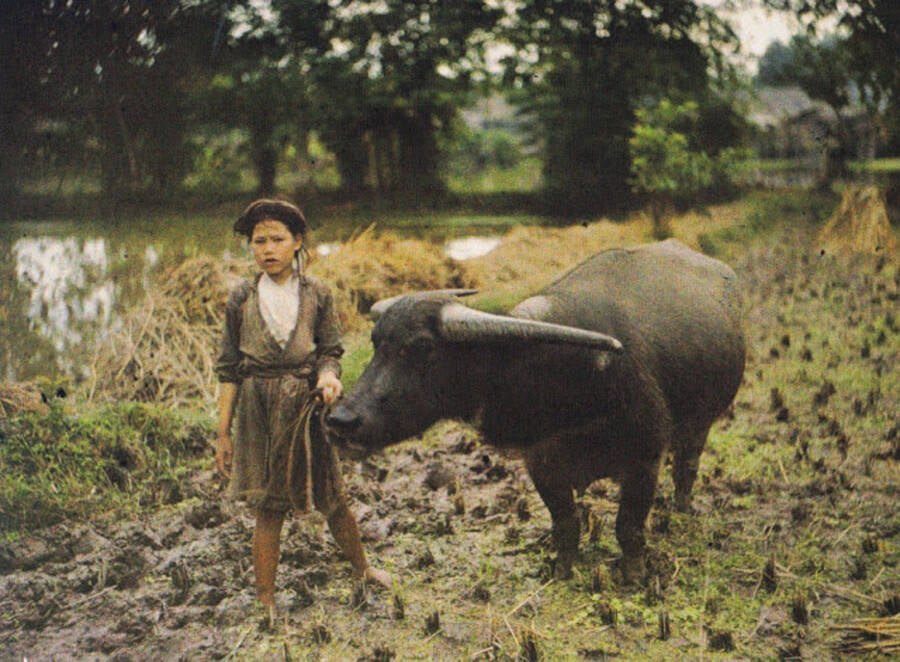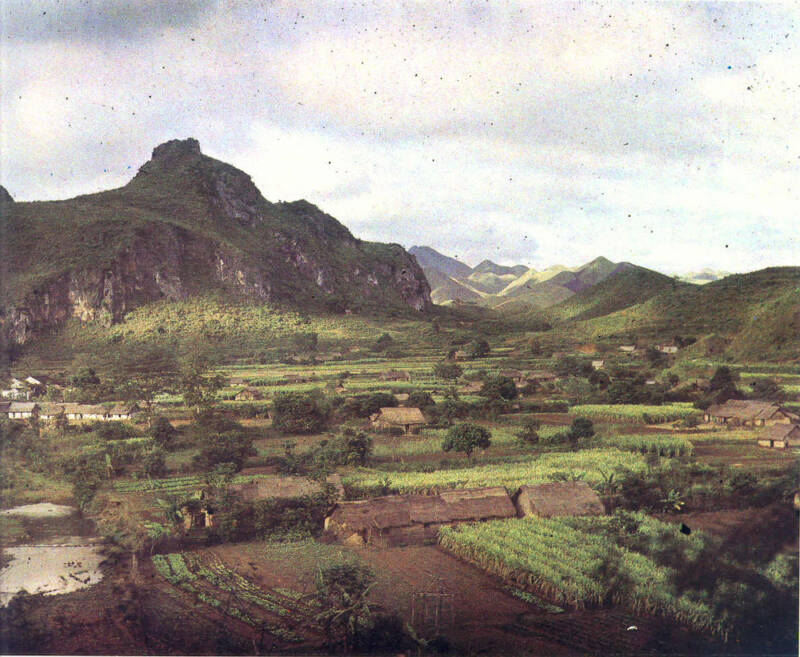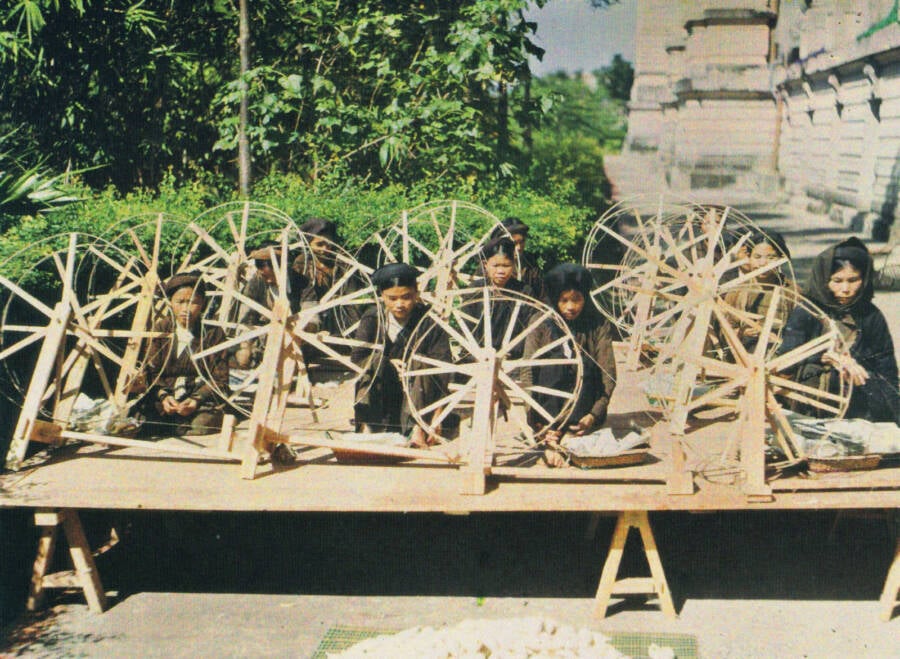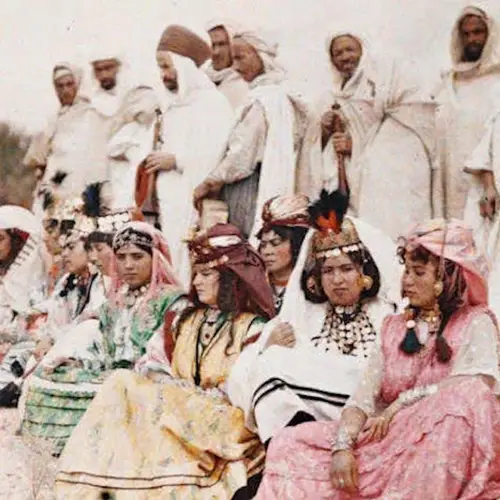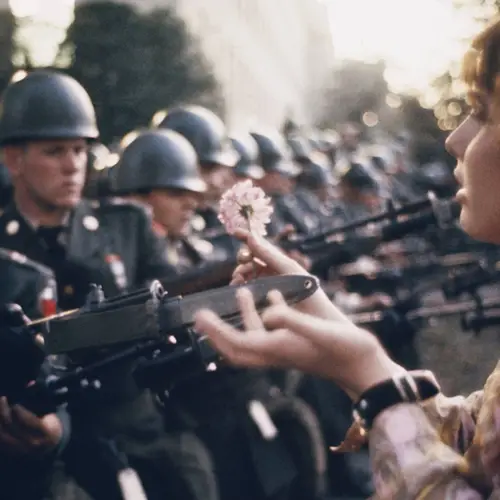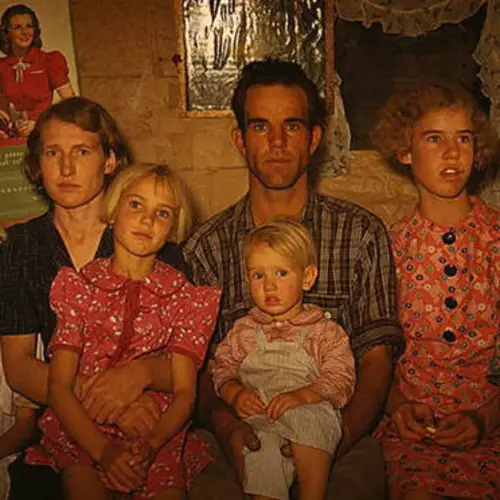These stunning autochromes, captured by French photographer Léon Busy, show what Vietnam really looked like during colonial times.
In 1887, France created a colonial system in modern-day Vietnam, claiming that it was part of “French Indochina.” This region also included modern-day Cambodia, and later, modern-day Laos. Colonial rule would endure in the area for over six decades, and during this time, the French used the entire region of Indochina for their own economic interests.
Though a small portion of upper-class Vietnamese people benefitted from this system, most locals suffered greatly — especially the peasants. Some argued that colonization had introduced new educational opportunities, improved medical care, and modern technology to the country. But very few poverty-stricken peasants were able to take advantage of such benefits.
Amidst this contentious period, a French photographer named Léon Busy traveled to the country to document day-to-day life. Using the then-newly created autochrome, he captured some of the first color photos of Vietnam.
While traveling through Vietnam, Busy took plenty of photos of prosperous families, impressive architecture, and colorful pieces of art, but he also captured images of impoverished beggars, people selling fruit at outdoor markets, and day laborers working fervently in the rice paddies.
Capturing a crucial chapter in Vietnam's history, these images help paint a picture of the country when it was under French rule. The colonization primed the area for conflict, ultimately resulting in the Vietnam War. This had profound effects not only in Vietnam — but all over the world.
See some of Léon Busy's most striking photos of colonial Vietnam in the gallery above, then learn more about the history of the region below.
Vietnam Prior To French Colonization
For much of Vietnam's early history, various Chinese dynasties dominated the region — but the natives resisted total assimilation into Chinese culture. In 939 C.E., uprisings against the Chinese led to Vietnamese independence.
What followed was a 900-year period of sovereignty. During this time, the Vietnamese economy was mostly agricultural, with many people focused on the cultivation of rice for their fellow countrymen. In fact, before France took over, emperors forbade the sale of rice outside of the country.
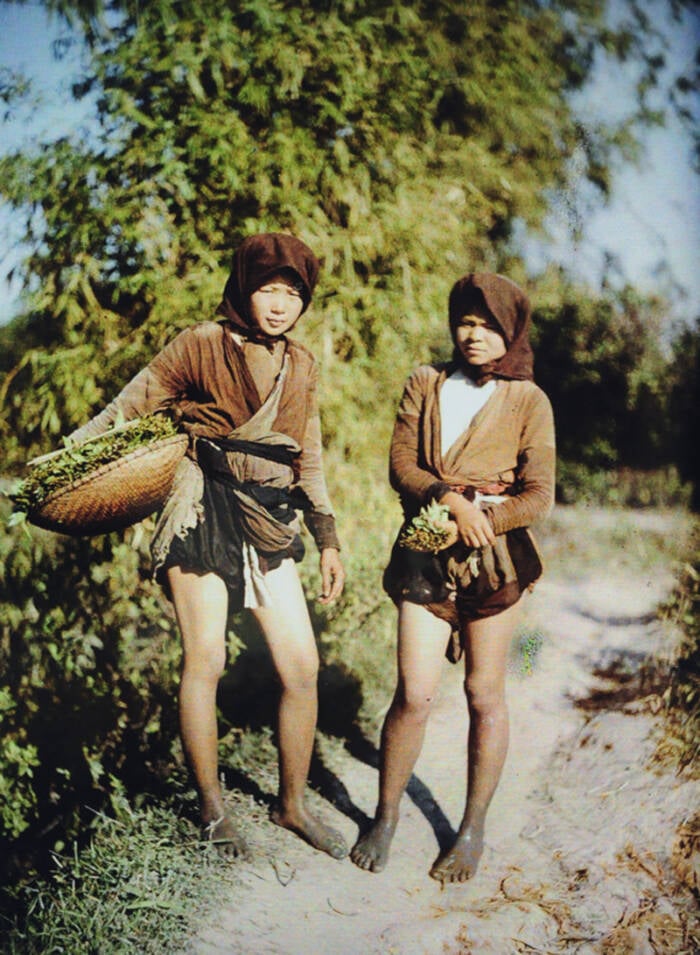
Albert Kahn MuseumWomen picking vegetables in the field.
There were artisan and fishing villages, along with some mining. However, the cultivation of rice was often the highest priority. Trade — both domestic and international — was not widely promoted, and most people tended to stay within their own villages and hamlets. Buddhism was widely practiced, and about four out of five adults could read and write in calligraphy.
Though they were ruled by a number of different emperors, these leaders generally stayed out of their subjects' lives, aside from collecting modest taxes. For many in the country, life was relatively peaceful.
France's Conquest Of Vietnam
French officials became interested in Vietnam and the rest of the Indochina region because they saw it as a way to line their own pockets. They aimed to establish a large trade presence there — using the area's natural resources and potential exports as their own, especially rice.
The conquest of Vietnam was a slow process. Starting in the 16th century, Indochina began to welcome European missionaries with technical skills and a hearty supply of Western merchandise and weapons. Gradually, France formed "The French East India Company," which gained a foothold in the area and slowly began to expand international trading.
The missionaries also spread Catholicism. Though some native people were interested in learning about this religion, others were not. Sometimes, a local would even attack a French priest or worker, and when this happened, French authorities always exacted revenge on the local — and used any resistance as an excuse to further extend their power. Then, the gradual replacement of Vietnamese leaders with French nationals began.
French Governor General Paul Doumer, who arrived in Indochina in 1897, was intent that the native people pay for the administrative costs of running the colonial region. He also wanted the locals to provide a wider range of exports that would be profitable for the French, not just rice.
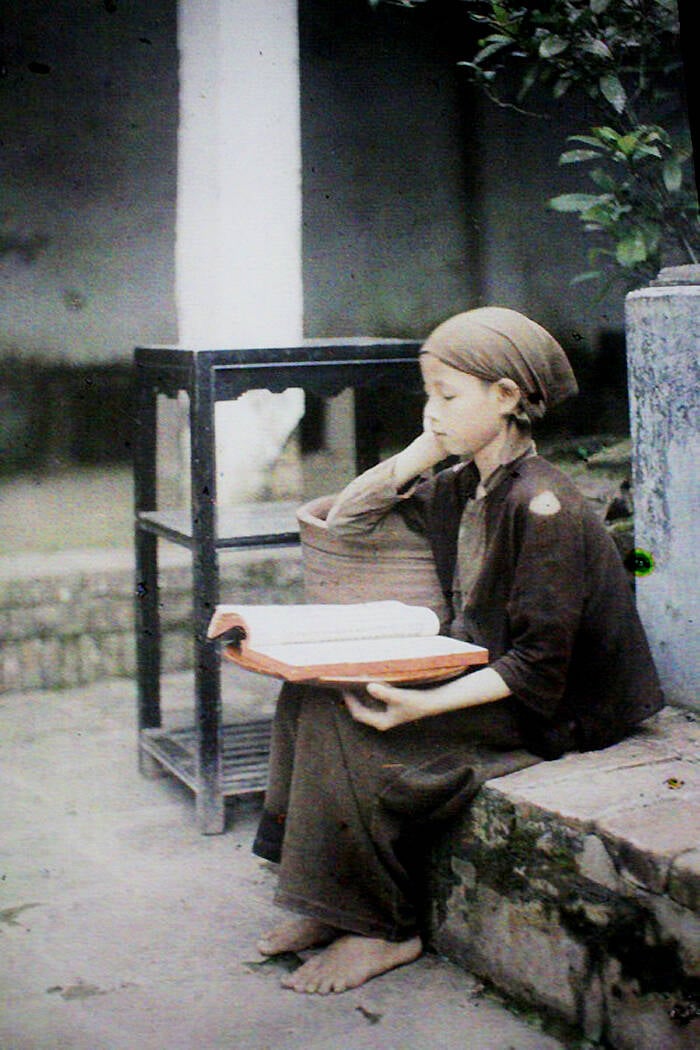
Albert Kahn MuseumA boy (possibly a monk in training) reads on a bench.
Doumer encouraged the use of opium — and as the native people became addicted to it, he started taxing it heavily. The wine trade and the salt trade were also heavily taxed. If one couldn't pay the taxes, they often lost their homes and land and would be pushed into work as day laborers.
Meanwhile, the French also went to great lengths to spread their culture throughout Indochina. They sought to "enlighten" the native people with their brand of civilization, and the Vietnamese soon found themselves essentially taken over by it. By 1925, roughly 5,000 Frenchmen ruled over the 30 million native people — in what was then called French Indochina.
French influence on Vietnam was multifaceted; it brought modern technologies (like electricity), wider streets, and parks — but also suffering. The economy benefitted no one but the rich, only a small number of Vietnamese children were able to attend school, and the natives were given few civil liberties, paving the way for unrest throughout the country.
This type of colonial rule would endure for over six decades. Though the French briefly lost control over the region during World War II, when Japanese troops took over the area, the French reasserted their authority in the country almost immediately after the war was over.
It wasn't until 1954 that the French would pull out of Vietnam — because they were defeated by the resistance group Viet Minh. But peace would be a long way off, as continued unrest set the stage for the devastating Vietnam War, which ultimately led to the country becoming a socialist republic.
But even though decades have passed since this turbulent time, French colonialism and its legacy still echo throughout Vietnamese culture today.
Photographer Léon Busy And His Vietnam Photos
During Vietnam's colonial era, French photographer Léon Busy made his way to the region to document daily life in what was then known as French Indochina. He was actually a soldier himself with the French colonial troops from 1895 to 1920. But starting around 1914, he began to take some of the first color photos in Vietnam thanks to the newly created autochrome.
This was part of an ambitious photo project funded by French banker Albert Kahn: Les Archives de la Planète, or "The Archives of the Planet." The collection was meant to document every culture on Earth, so it involved many photographers, but Busy was tasked with documenting Indochina.

Musée Albert KahnAlbert Kahn, the man behind the international photo project "The Archives of the Planet."
Though Busy was initially hesitant about using the autochrome, Kahn encouraged him to give it a try, leading to nearly 2,000 color images of daily life in colonial Vietnam, which can be seen in the gallery above.
While Busy made sure to document the region's wealthiest residents, he also didn't shy away from capturing some of the less glamorous sights and some struggles that natives endured. By the late 1920s, he was collaborating with Vietnamese photographers for tourist and documentary publications.
To this day, Busy's colonial Vietnam photos remain invaluable, not only because they captured a crucial time period in the country's history, but also because they were likely the first color photos ever to do so.
Next, read about how the Gulf of Tonkin incident led to the Vietnam War. Then, learn about Operation Babylift, the U.S. government's plan to save Vietnamese orphans before the fall of Saigon.


